사영분해와 단사분해
우리는 [다중선형대수학] §사영가군, 단사가군, 평탄가군, ⁋정의 3에서 사영가군과 단사가군을 정의하였다. 이를 diagram의 언어로 바꾸어 쓰면 일반적인 abelian category에서 projective object와 injective object의 개념을 얻는다.
정의 1 Abelian category $\mathcal{A}$를 고정하자.
-
$\mathcal{A}$의 대상 $P$가 projective object사영 대상라는 것은 다음의 diagram
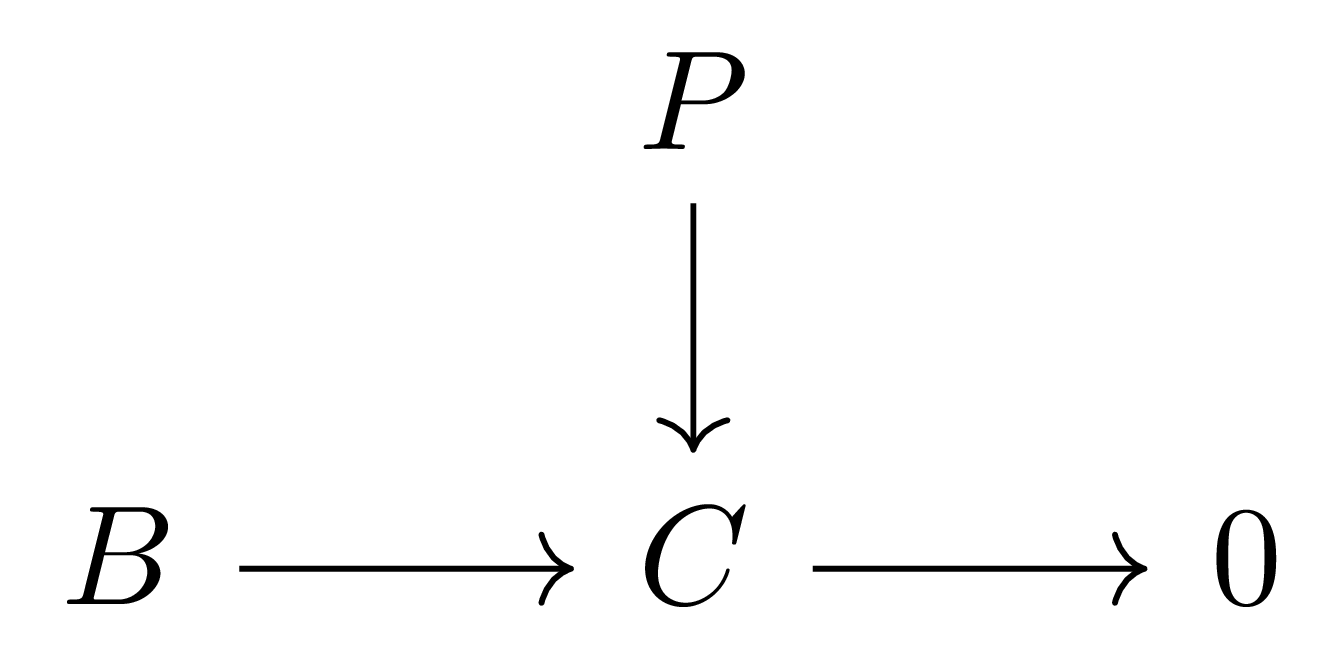
이 주어질 때마다, 다음 diagram
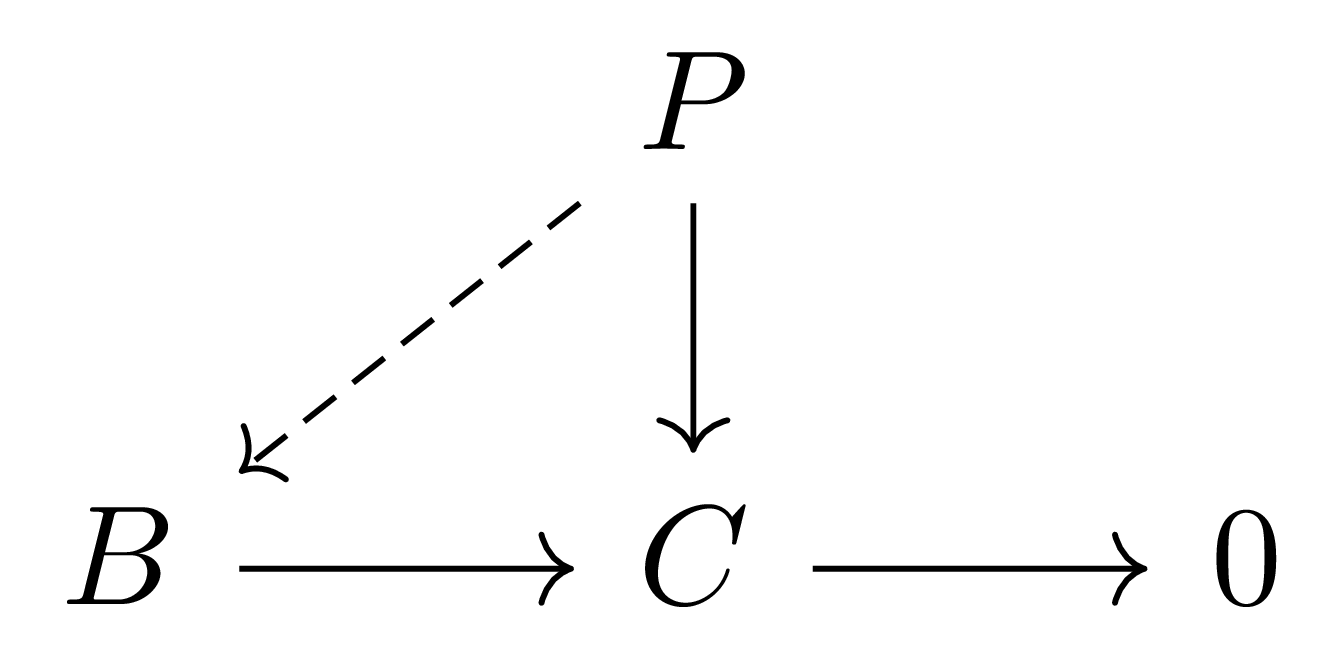
을 commute하게 하는 $P \rightarrow B$가 적어도 하나 존재하는 것이다.
만일 $\mathcal{A}$의 임의의 대상 $A$마다 적당한 projective object $P$가 존재하여 $P \rightarrow A \rightarrow 0$이 exact이도록 할 수 있다면, $\mathcal{A}$가 enough projective를 갖는다 말한다. -
$\mathcal{A}$의 대상 $I$가 injective object단사 대상라는 것은 다음의 diagram
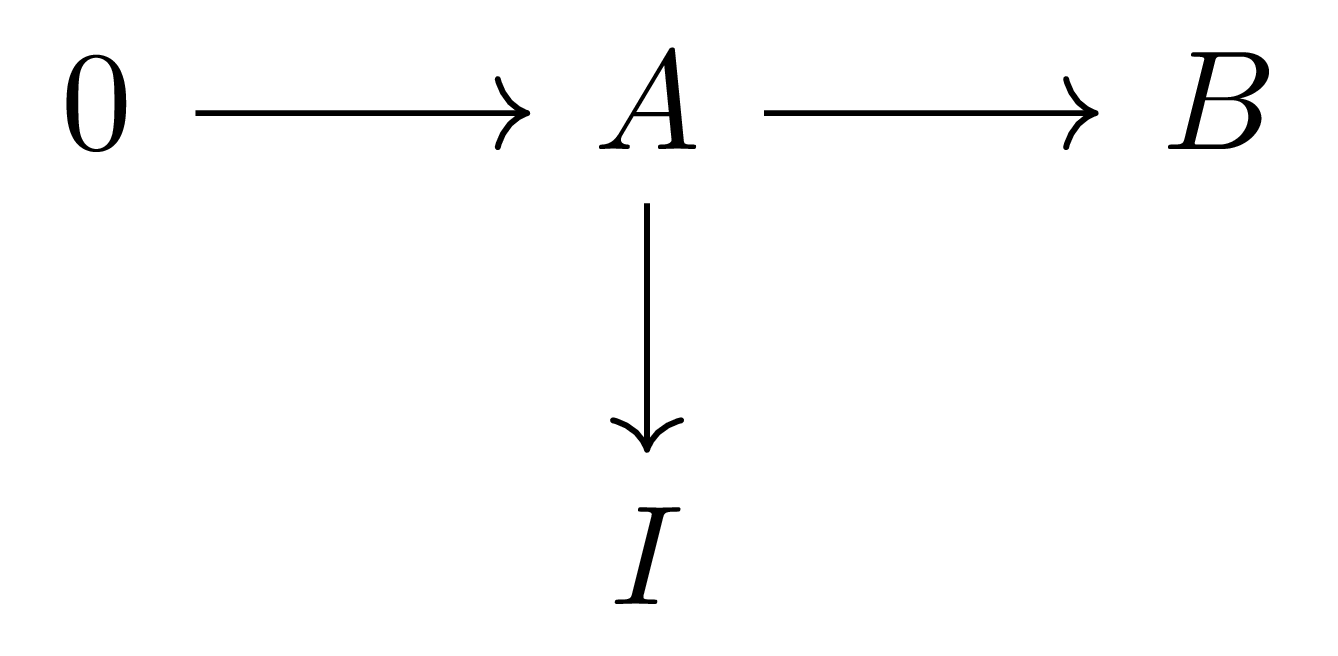
이 주어질 때마다, 다음 diagram
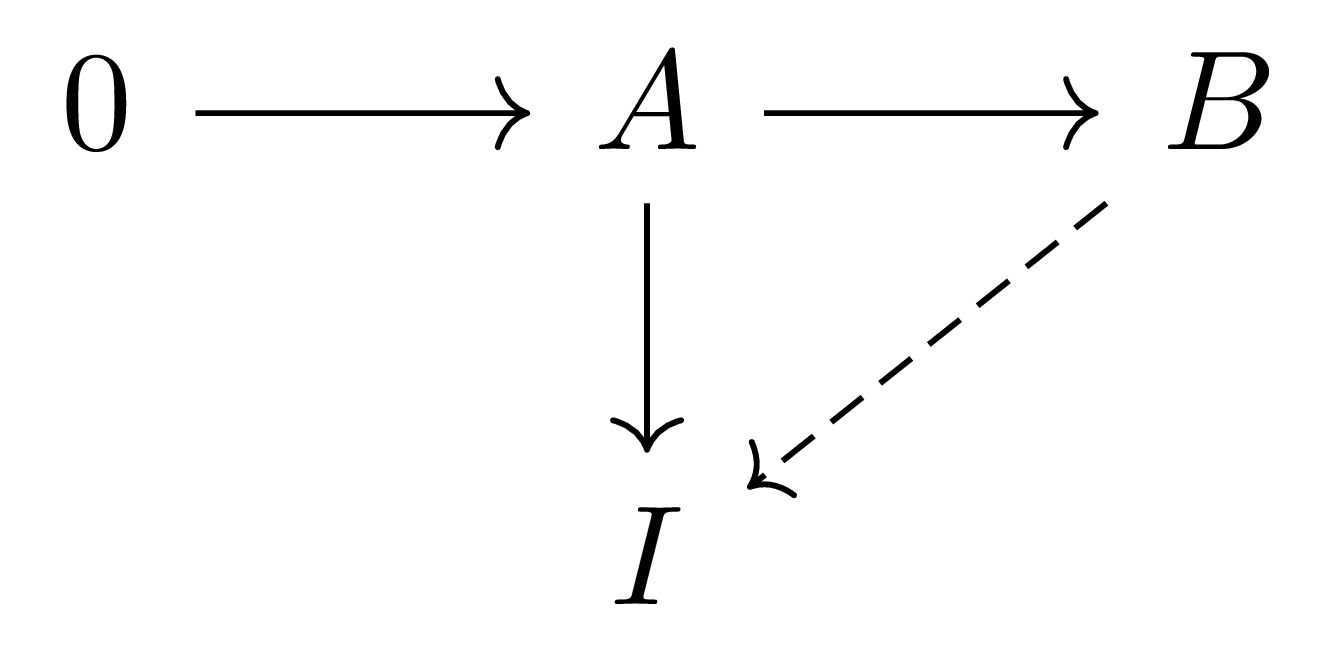
을 commute하게 하는 $B \rightarrow I$가 적어도 하나 존재하는 것이다.
만일 $\mathcal{A}$의 임의의 대상 $A$마다 적당한 injective object $I$가 존재하여 $0 \rightarrow A \rightarrow I$이 exact이도록 할 수 있다면, $\mathcal{A}$가 enough injective를 갖는다 말한다.
또, 다음을 정의한다.
정의 2 Abelian category $\mathcal{A}$의 대상 $M$에 대하여, 다음을 정의한다.
-
$M$의 left resolution왼쪽 분해은 다음의 chain complex
\[\cdots \longrightarrow P_2 \longrightarrow P_1 \longrightarrow P_0 \overset{\epsilon}{\longrightarrow} M \longrightarrow 0\]가 exact이도록 하는 chain complex $P_\bullet$과 augmentation map $\epsilon: P_0 \rightarrow M$이다. 만일 각 $P_i$들이 모두 projective object들이라면 이를 projective resolution사영분해라 부른다.
-
$M$의 right resolution오른쪽 분해은 다음의 chain complex
\[0 \longrightarrow M \overset{\eta}{\longrightarrow} I^0 \longrightarrow I^1 \longrightarrow I^2 \longrightarrow \cdots\]가 exact이도록 하는 cochain complex $I^\bullet$과 augmentation map $\eta: M \rightarrow I^0$이다. 만일 각 $I^i$들이 모두 injective object들이라면 이를 injective resolution단사분해라 부른다.
$\mathcal{A}$의 projective object는 $\mathcal{A}^\op$의 injective object이다. 마찬가지로 $\mathcal{A}$가 enough projective를 갖는다면 $\mathcal{A}^\op$는 enough injective를 갖는다. 또, $M$의 $\mathcal{A}$에서의 projective resolution은 $M$의 $\mathcal{A}^\op$에서의 injective resolution과 동일하다. 때문에 다음 명제는 projective resolution에 대한 것만 증명해도 충분하다.
명제 3 Abelian category $\mathcal{A}$가 enough projective를 갖는다면, $\mathcal{A}$의 임의의 대상 $M$은 projective resolution을 갖는다. 마찬가지로, abelian category $\mathcal{A}$가 enough injective를 갖는다면, $\mathcal{A}$의 임의의 대상 $M$은 injective resolution을 갖는다.
증명
우선 $\mathcal{A}$가 enough projective를 갖는 것으로부터 적당한 surjection $\epsilon_0:P_0 \rightarrow M$을 잡을 수 있다. $M_0=\ker \epsilon_0$이라 하자. 그럼 $\mathcal{A}$는 enough projective를 가지므로, 적당한 surjection $\epsilon_1:P_1 \rightarrow M_0$을 잡을 수 있다. 이제 $\epsilon_1: P_1 \rightarrow M_0$과 inclusion $\iota_0: M_0 \rightarrow P_0$을 합성한 $d_1=\iota_0\circ\epsilon_1$까지를 diagram으로 그리면 다음과 같다.
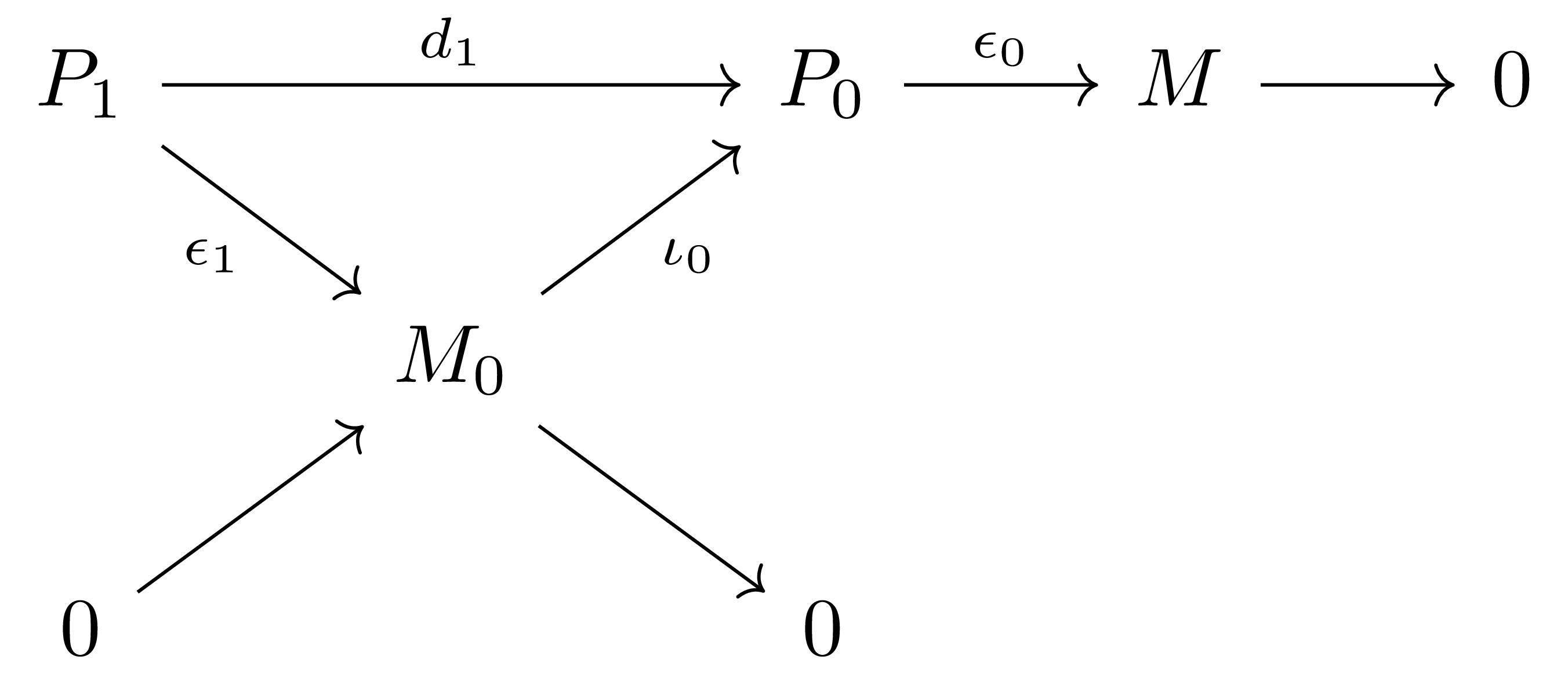
이러한 방식으로, $\epsilon_n:P_n \rightarrow M_{n-1}$이 주어질 때마다 $M_n=\ker \epsilon_n$으로 잡아 다음과 같은 commutative diagram
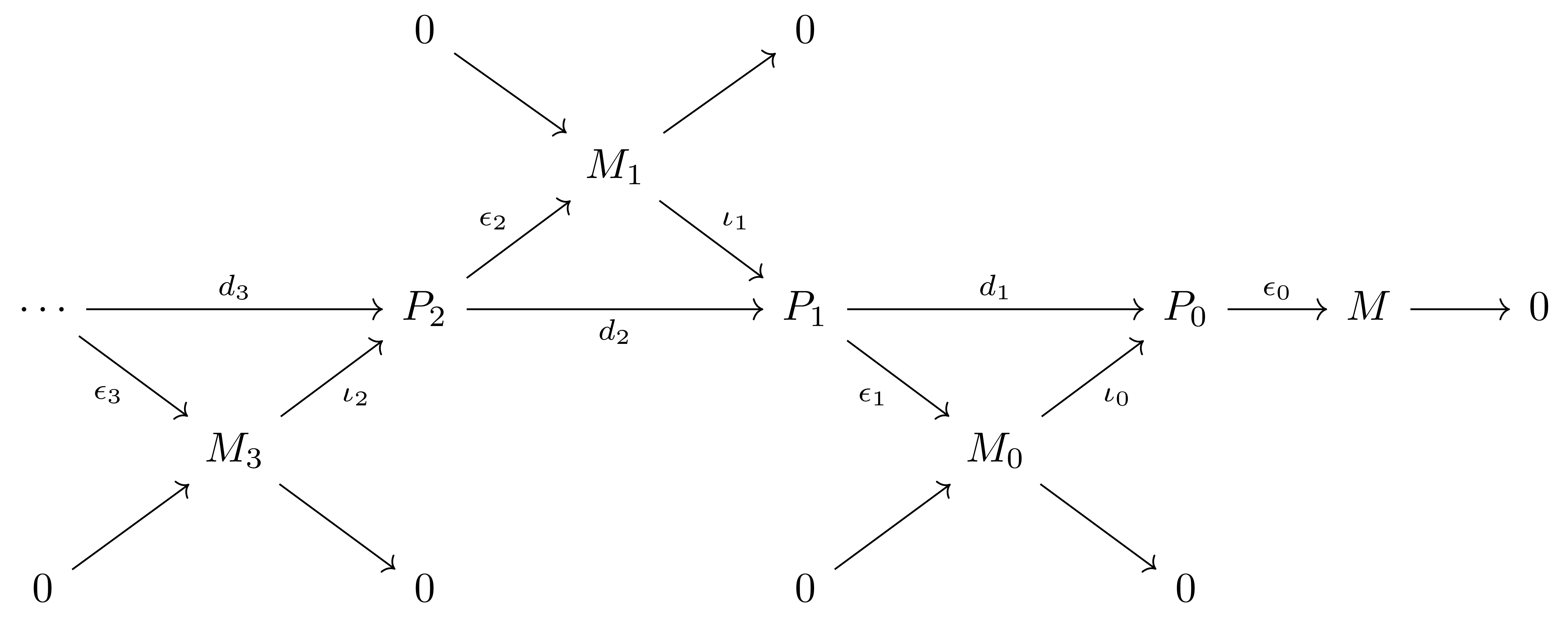
을 얻는다. 그럼 가운데에서 얻어지는
\[\cdots \overset{d_3}{\longrightarrow} P_2 \overset{d_2}{\longrightarrow} P_1 \overset{d_1}{\longrightarrow} P_0 \overset{\epsilon_0}{\longrightarrow} M \longrightarrow 0\]을 보면, 다음의 식
\[\im(d_n)=\im(\iota_{n-1}\circ\epsilon_n)=\im(\iota_{n-1})=\ker(\epsilon_{n-1})=\ker(\iota_{n-2}\circ\epsilon_{n-1})=\ker(d_{n-1})\]을 얻는다. 여기서 식 $\im(\iota_{n-1}\circ\epsilon_n)=\im(\iota_{n-1})$는 $\epsilon_n$이 surjective라는 것을, 식 $\ker(\epsilon_{n-1})=\ker(d_{n-1})$은 $\iota_{n-2}$이 injective라는 것을 각각 이용하였다. 따라서 $P_\bullet$은 $M$의 projective resolution이다.
이번 글에서 우리의 목표 중 하나는 임의의 $A$-module은 항상 projective resolution과 injective resolution을 갖는다는 것을 증명하는 것이다. 명제 3을 사용하면 이는 $\lMod{A}$가 enough projective와 enough injective를 갖는다는 것을 증명하면 충분하다. $\lMod{A}$가 enough projective를 갖는다는 것은 자명하다.
명제 4 Category $\lMod{A}$는 enough projective를 갖는다.
증명
[다중선형대수학] §기저, ⁋명제 2 그리고 [다중선형대수학] §사영가군, 단사가군, 평탄가군, ⁋명제 4에 의하여 자명하다.
그러나 $\lMod{A}^\op$에 대해서는 아는 것이 아무것도 없으므로, $\lMod{A}$가 enough injective를 갖는다는 것은 위의 결과로부터 따라나오지 않는다. 따라서 다음의 명제는 별도의 증명이 필요하다.
명제 5 Category $\lMod{A}$는 enough injective를 갖는다.
증명
어렵지 않게 right adjoint는 injective object를 보존함을 보일 수 있다. 그럼 ring homomorphism $\mathbb{Z}\rightarrow A$로부터 얻어지는 coextension of scalar $\Ab \rightarrow \lMod{A}$는 restriction of scalar의 right adjoint이므로 $\Ab$의 injective object는 $\lMod{A}$로 갔을 때 injective object가 된다. ([대수적 구조] §스칼라의 변환, ⁋명제 6) 따라서 원하는 증명은 $\Ab$가 enough injective를 갖는다는 사실을 증명하면 충분하다. 이는 임의의 $A\in\Ab$에 대하여,
\[I(A)=\prod_{f\in\Hom_\Ab(A, \mathbb{Q}/\mathbb{Z})} \mathbb{Q}/\mathbb{Z}\]그리고 $e_A:A \rightarrow I(A)$를 $a\mapsto (f(a))_{f\in\Hom(A, \mathbb{Q}/\mathbb{Z})}$으로 정의하면 된다.
분해의 유일성
한편, 사영분해와 단사분해의 유일성은 다음의 더 강력한 정리로부터 얻어진다.
정리 6 Projective resolution $P_\bullet \rightarrow M$과 임의의 $u:M \rightarrow N$이 주어졌다 하자. 그럼 임의의 left resolution $Q_\bullet \rightarrow N$가 주어질 때마다 다음의 diagram

을 commute하게 하는 chain map $f:P_\bullet \rightarrow Q_\bullet$이 up to homotopy로 유일하게 존재한다.
비슷하게, injective resolution $N \rightarrow I^\bullet$과 임의의 $u: M \rightarrow N$이 주어졌다 하자. 그럼 임의의 right resolution $M \rightarrow J^\bullet$가 주어질 때마다 다음의 diagram

을 commute하게 하는 chain map $f:J^\bullet \rightarrow I^\bullet$이 존재한다.
증명
마지막으로, 다음 글에서 중요하게 사용할 다음 보조정리를 증명하고 마친다.
보조정리 7 다음의 short exact sequence
\[0 \longrightarrow A'\overset{i}{\longrightarrow}A\overset{p}{\longrightarrow}A'' \longrightarrow 0\]가 주어졌다 하고, $A’$, $A’‘$의 projective resolution들 $P_\bullet’$, $P_\bullet’‘$이 주어졌다 하자. 그럼 $P_n=P_n’\oplus P_n’‘$으로 정의되는 chain complex $P_\bullet$은 $A$의 projective resolution이 되며, 이들 complex들 사이의 exact sequence
\[0 \rightarrow P' \rightarrow P \rightarrow P'' \rightarrow 0\]이 존재한다.
증명
우선 주어진 상황을 diagram으로 그려보면 다음과 같다.
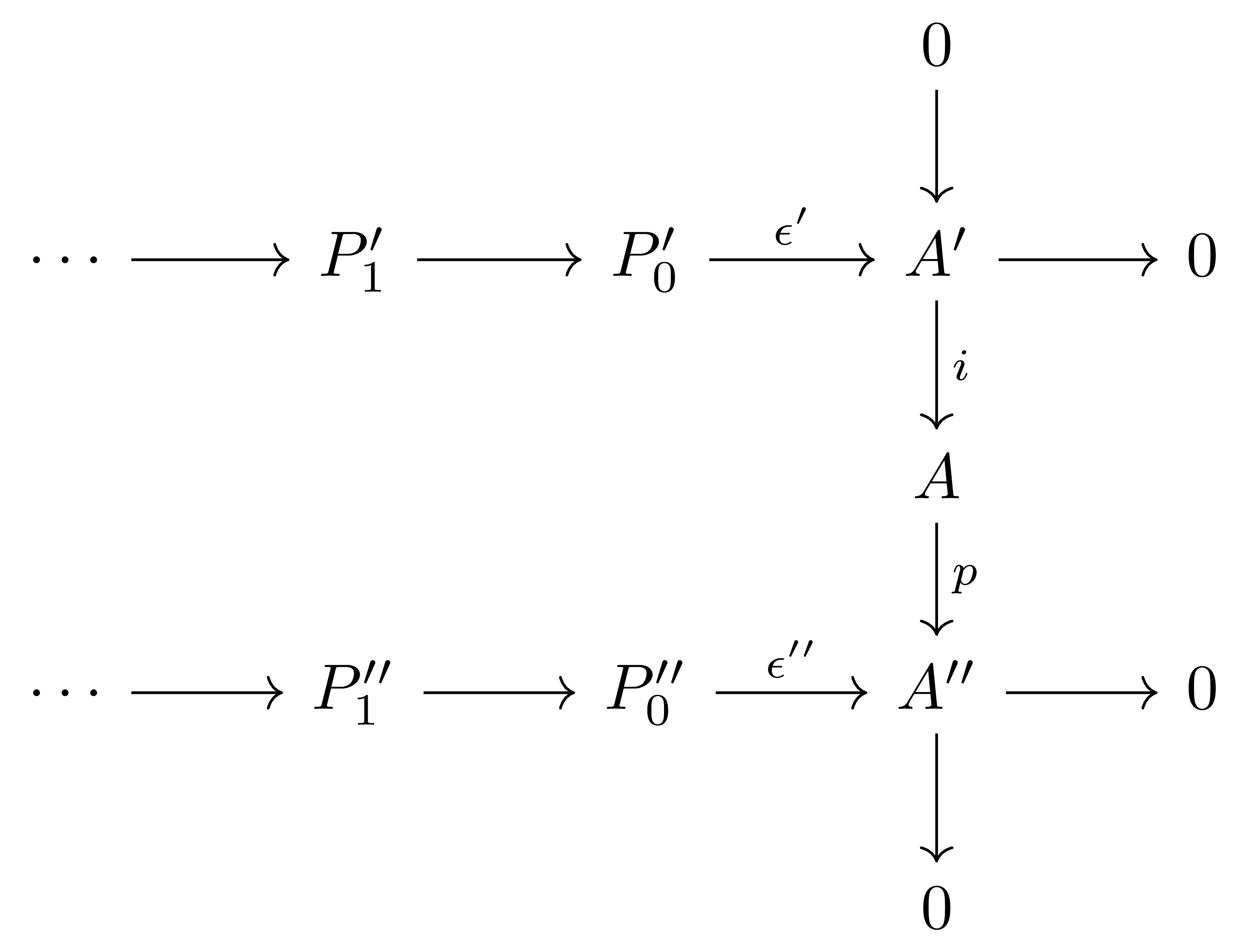
이제 $P_0’‘$이 projective라는 조건으로부터 $P_0’’ \rightarrow A$을 정의할 수 있다. 한편 $P_0’ \rightarrow A$는 $i_A$와 $\epsilon’$의 합성으로 이미 주어지므로, 이들의 direct sum을 생각하면 $\epsilon:P_0 \rightarrow A$를 얻는다. 이제 §Diagram chasing, ⁋보조정리 5으로부터 다음의 diagram
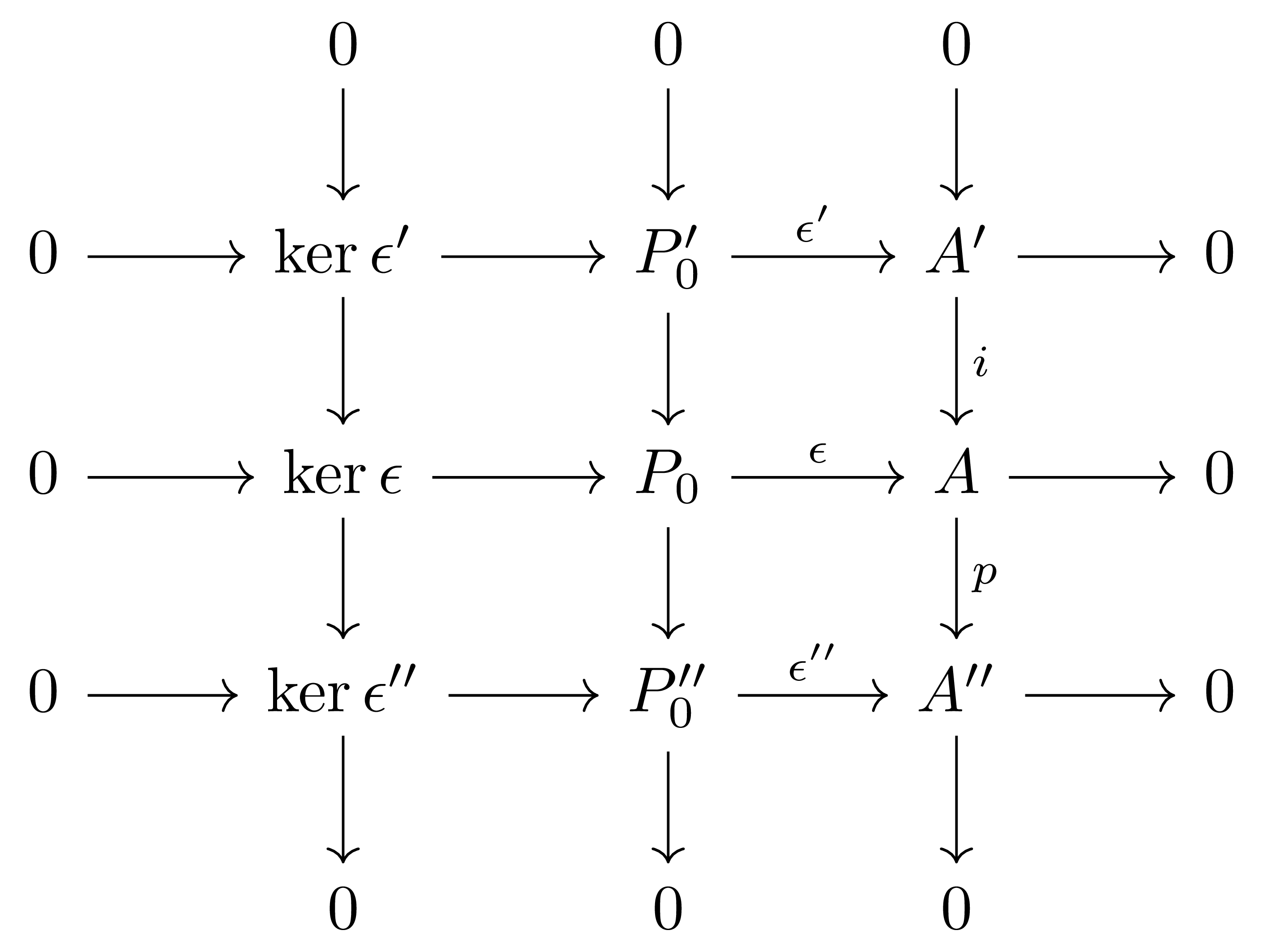
을 얻고, 특히 다음의 diagram
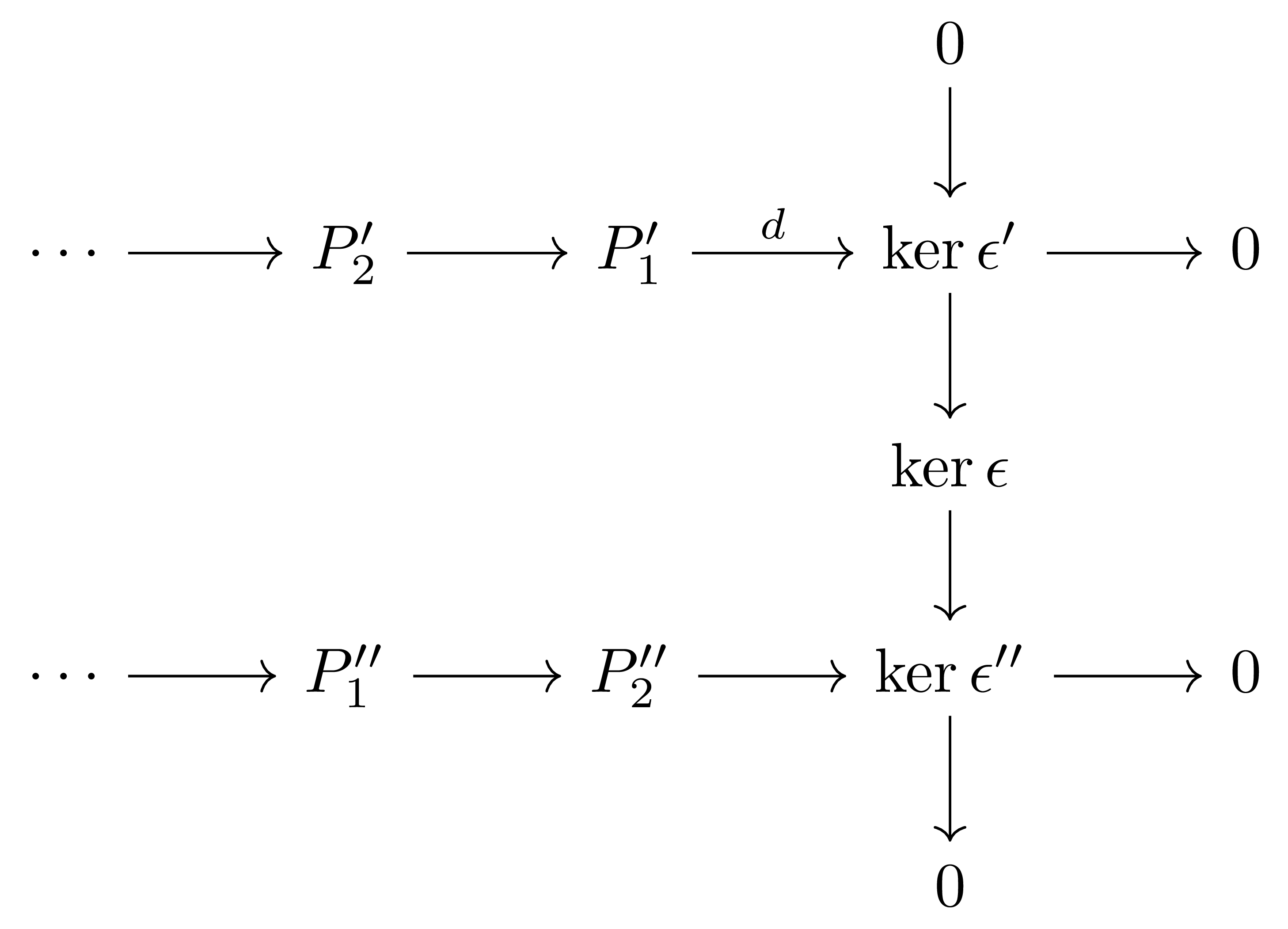
을 얻게 된다. 이 과정을 반복하여 $P_\bullet$을 얻는다.

댓글남기기